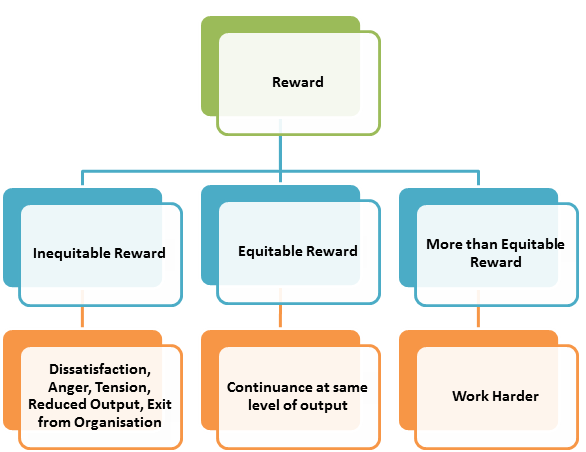What Is Equity Theory of Motivation? A Guide for Modern Workplaces
The equity theory of motivation enables leaders to incorporate equality and fairness into their work culture. Explore how it applies in the real world.
The equity theory of motivation enables leaders to incorporate equality and fairness into their work culture. Explore how it applies in the real world.

If you’ve ever watched a team’s dynamics shift when someone gets a promotion or a bit more public praise than usual, you’ve seen the impact of perceived fairness at work. In corporate settings, it’s quite common for some employees to feel motivated while others are quietly disengaged, even when doing the same job at the same pay.
Equity theory of motivation, a concept rooted in social psychology, helps us understand exactly why these behaviors and feelings matter so much. It enables us to determine what needs to be done to promote fairness and motivation in the learning environment or organization.
In this post, we will discover what is equity theory of motivation, how it works, and why it’s relevant for building an engaged, motivated workforce.

Equity theory is all about the importance of fairness in motivation. It’s the idea that we measure what we put into our jobs (our inputs) against what we get out (our outputs), and then compare our personal balance with those around us.
If the effort you give seems greater than the rewards you get, especially compared to others, you’re expected to be frustrated. On the other hand, when things feel equitable, you’re much more likely to be engaged, productive, and loyal.
The theory was introduced in the 1960s by workplace psychologist J. Stacey Adams. He noticed that beyond pay, people’s perception of fairness drives their motivation. Adams argued that employees track their own mental “ledgers” by weighing effort, skills, and commitment (inputs) against tangible and intangible benefits (outputs).
These ledgers aren’t kept in isolation. Instead, we regularly compare them to those of our colleagues to assess the fairness of our workplace.

Let’s break down these crucial concepts:
Inputs are everything you contribute in your role. They can be tangible (working hours, job responsibilities) and intangible (enthusiasm, experiences, loyalty). Here are some common workplace inputs:
Outputs are what you get in return from your job or organization. They measure more than just your salary, including:
The heart of equity theory is the “input/output ratio.” If an employee feels that their contributions match their rewards and are comparable to those in their circle, they will experience a sense of fairness and satisfaction. However, if the ratio seems worse than their peers’, they are more likely to be dissatisfied.
Equity theory relies on social comparison. Rather than assessing our situation in a vacuum, we look around and gauge what others receive. We might compare ourselves to:
This isn’t always a conscious process, but it deeply shapes our sense of fairness and our motivation at work.

Suppose you’re an employee who’s just taken on extra projects for your team. You’re working longer hours, contributing ideas, and striving for every deadline. However, at the next company meeting, a colleague whose workload appears lighter is recognized in front of everyone.
How would you feel? If you sense your input/output ratio is higher than theirs, equity theory predicts frustration, resentment, or a drop in motivation.
You will tally up your inputs and outputs, measuring work, contributions, and what you receive. Then, you will compare your ratio to someone else’s (a “referent other”) and judge if things feel fair or unfair.
If the ratios match, you might feel motivated and satisfied. However, if you feel undervalued (you put in more effort and receive less), you may reduce your effort, seek acknowledgement, ask for a raise, or even consider leaving the job.
Nowadays, new talent prefers working at organizations that prioritize fairness and equality. Employees expect open dialogues about pay, career paths, and recognition from employers, which has raised the stakes for perceived equity in workplaces.
Organizations must elevate their game to be the number one choice for skilled candidates, and the equity theory of motivation can help them in this regard. By applying this approach to their culture, they can easily present themselves as transparent and fair.
Following best equity practices in your work environment leads to:
When employees believe they're being treated fairly, they’re more likely to be productive, innovative, and invested in your organisation’s goals.
Perceived fairness keeps talented people committed to your company in the long term.
Equity helps build trust, cohesion, and psychological safety. Teams work better when no one feels ignored or undervalued.
Engaged, motivated workforces are consistently more effective and efficient.
One of the most effective ways to promote equity is through transparency and openness. Let employees know how decisions are made around pay, recognition, and opportunities for growth. Encourage feedback and candid conversations about fairness and equity. Even if you can't equalize every situation immediately, honest communication goes a long way in maintaining trust and motivation.
To see equity theory in action, let’s explore a few scenarios:
Maria and Jordan have nearly identical roles at a software company. Maria consistently takes on extra projects and mentors new team members. However, both are paid the same and get similar performance reviews.
Maria starts to feel unappreciated and resentful. If nothing changes, there’s a risk Maria might reduce her effort or look for a job elsewhere. This is a classic dynamic of equity theory.
A sales department runs a “Top Performer” program that regularly recognizes one employee, primarily based on visible wins rather than behind-the-scenes efforts. When those who contribute in less obvious ways aren’t acknowledged publicly, they may perceive inequity in recognition.
This can lead to disengagement, decreased morale, or even conflict.
Sometimes, an employee receives a promotion or pay rise that they feel exceeds their efforts, especially compared to coworkers. They may react by working harder to "deserve" the reward, or, if guilt lingers, by rationalising it (perhaps believing their potential is higher).
Over-reward can cause discomfort, meaning equity theory isn’t just about those who feel shortchanged.
Equity theory of motivation emphasizes perceived fairness as a key factor in workplace motivation. When employees feel that their rewards align with their effort and that fairness is the norm throughout the organization, they’re more likely to stay engaged, loyal, and enthusiastic.
As an employer or a trainer, prioritizing equity is the key to unlocking your team’s potential. Many AI platforms, such as Coursebox, are designed to help trainers, business leaders, and course creators build equitable learning experiences.
Coursebox features an automated feedback system, providing learners with feedback based on clear rubrics and standards. This reduces human biases and ensures consistency.
Moreover, Coursebox aligns learning activities and assessments to recognized standards, so learners know exactly what’s being measured and how rewards (certificates, badges) are earned. It also comes with AI-powered chatbots that provide tailored assistance while ensuring recognition and resources aren’t distributed arbitrarily.
Coursebox also allows leaders to tweak learning paths to ensure fairness across diverse roles and levels. By making fairness central to learning, Coursebox cultivates trust, motivation, and engagement across your teams.

Sign up for free now to learn how you can build a happier, productive, and motivated workforce.
Equity theory suggests that people feel most motivated when the effort they put into their work is matched by the rewards they receive, particularly in comparison to their peers. If an employee sees a coworker receiving more for the same or less effort, it may feel unfair, and that can negatively impact their motivation. On the other hand, when things feel balanced, they’re likely to be more engaged and productive.
Employees experience equity theory every time they notice differences in recognition, pay, or workload among colleagues. If they consistently take on extra tasks without acknowledgment while a coworker is praised for less, they may feel undervalued. This sense of unfairness can make them less motivated or even prompt them to look for new opportunities.
Managers can support employee motivation by ensuring that employees understand how decisions regarding pay, recognition, and responsibilities are made. Open communication, transparent policies, and regular check-ins help everyone feel valued for their unique contributions. By listening to feedback and adjusting rewards as necessary, managers foster a fair and motivating environment.
Not quite. Equity is about fairness, not necessarily equality. It means rewards should be proportionate to the input each person gives. If one team member puts in more effort or brings extra skills, it’s perfectly fair for them to receive greater rewards than someone who contributes less. What matters most is that everyone feels the system is just and transparent.
Coursebox makes it easy to deliver transparent, data-driven training and recognition. With automated feedback, objective assessments, and progress trackers, everyone can see how their efforts translate into results and rewards. This visibility, paired with competency-aligned content and instant recognition, helps learners feel that their input is valued, supporting fairness and boosting overall engagement.
Get started for free today.
